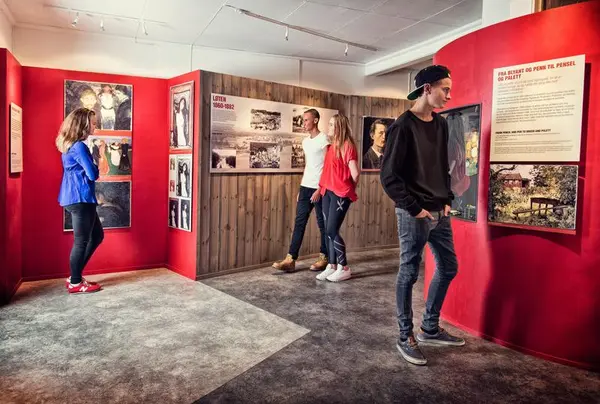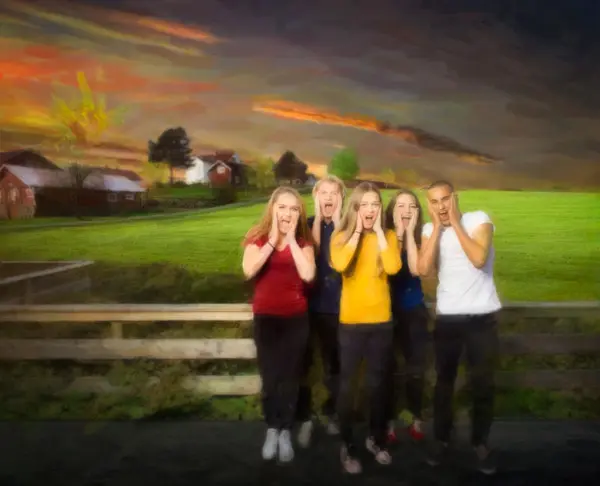- 1/1
The Munch Center contains information about Munch's connection to Løten and also offers opportunities for experiences. JH Studios / Lars Martin Bøe
When the Munch centre in Løten was going to be established, Klevfos was a logical choice. This area was part of East Engelaug, where Edvard Munch was born in 1863. Munch was physically present here as a child when he visited Engelaug. Inside the centre, you will learn about Munch's childhood and his relationship to Løten, and you can see several of his early drawings from the area.
Born in Løten
Edvard Munch was born on 12 December, 1863 at East Engelaug, Ådalsbruk, Løten. His father, Christian Munch, served as a doctor at Tofsrudmoen. Edvard did not live in Løten very long, but he was baptised here twice: first in an emergency baptism at home at Engelaug because he was so sickly, and later a confirmation of the baptism in Løten church on 15 April, 1864.
The family moved to Oslo in 1864, when Edvard’s father got a job as the national army physician there. Because the family kept in touch with the people at Engelaug, Edvard travelled back to the area several times as a child and youth and made friends here. It is believed that this closeness to the landscape and village life in Løten significantly contributed to how he evolved as a person and an artist.
"Angel hill"
The Munch family called it “Engelhaug” (Angel Hill) because the people here were so kind. Ole Thingstad, the son at Engelaug, was a good friend that Edvard kept in touch with all of his life and whom he visited at Engelaug as late as 1938.
As a child, Edvard was already good at drawing, and there are many drawings of people from the district whom he knew and drew while he was here on holiday in 1882. He drew Ole Thingstad, Dr. Munthe in Elverum, and others. There are also sketches from the area around Lake Mjøsa from the same year—four years before the official version of the famous painting "Sick Child" was exhibited for the first time at the autumn exhibition in 1886. It is likely that the sick child is based on Edvard's sister Sophie, who was born at By farm in Løten in 1862.
All of his sketches from the area can be seen on a screen in the Munch centre.
- 1/1
Photo from the photo point at the farm Engelaug Østre in Ådalsbruk, where Edvard Munch was born. JH Studios / Lars Martin Bøe
Munch trail and visiting the centre
Also visit the Munch trail, containing five boards marking places Edvard Munch was associated with in Løten. There are two boards located on the site of the Klevfos Industrial Museum, one board by the Munch family’s first home at By in Løten, and a board by Tofsrud, where the military facility where Munch's father Christian worked as a doctor, was located. There is also a board below East Engelaug, where Edvard Munch was born.
The Munch Centre is open by appointment outside of the museum's regular opening hours. Contact us by phone on +47 62 50 88 00.
The Munch centre in Løten was opened at Klevfos in June of 2012, in collaboration with the municipality of Løten. Løten municipality owns the centre, and it is run by Klevfos pursuant to an agreement with the municipality.
There are regular guided tours of the Munch centre every day at 13 pm during the museums open season in July.

